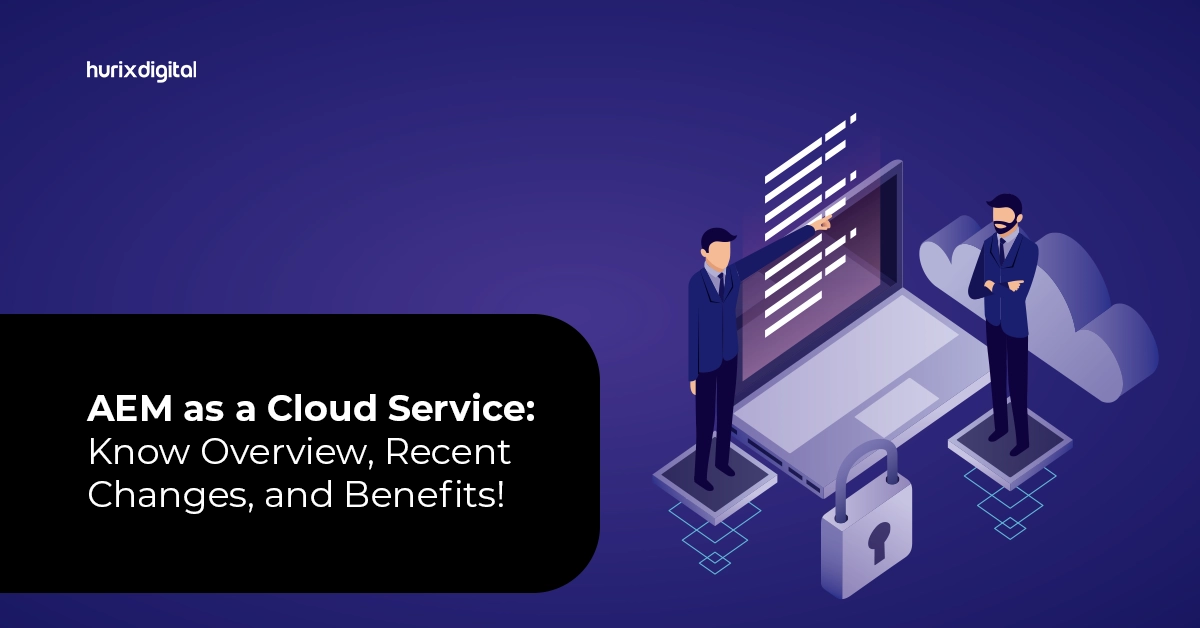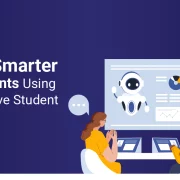
What You Need to Know About AEM as a Cloud Service: Best Practices and Benefits
Summary
Learn about Adobe Experience Manager (AEM) as a cloud service, including best practices for implementation and the benefits it offers for content management and digital experiences.
Are you looking for a way to create, manage, and deliver amazing digital experiences for your customers, partners, and employees? Do you want to take advantage of the latest technologies and innovations in the cloud? If so, you need to check out AEM as a Cloud Service, the next-generation solution for experience management.
AEM Cloud Service is the cloud-native version of Adobe Experience Manager (AEM), the industry-leading platform for content and digital asset management. AEM offers all the features and benefits of AEM, plus the scalability, reliability, and security of the cloud.
But how can you make the most of AEM as a Cloud Service and unleash its full potential for your business? In this blog, we will share some tips and tricks on how to use the AEM platform effectively and efficiently.
Table of Contents:
- What is AEM as a Cloud Service and Why You Need It
- How to Use AEM as a Cloud Service Effectively
- Conclusion
What is AEM as a Cloud Service and Why You Need it?
AEM is a cloud-based solution that enables you to create, manage, and deliver personalized and engaging digital experiences across multiple channels and devices.
With the AEM platform as a Cloud Service, you can:
- Build and launch websites, mobile apps, and other digital products faster and easier than ever before.
- Manage and optimize your content and assets in a single, unified platform that integrates seamlessly with other Adobe solutions, such as Adobe Analytics, Adobe Target, and Adobe Campaign.
- Deliver consistent and relevant experiences to your audiences, no matter where they are or what device they use.
- Scale up or down your resources and capabilities according to your changing needs and demands without worrying about infrastructure or maintenance costs.
- Benefit from the continuous innovation and improvement of Adobe, which ensures that you always have access to the latest features and updates.
Also Read: Why AEM is the Platform of Choice for Digital Marketers
How to Use AEM as a Cloud Service Effectively
AEM is a powerful and flexible solution that can help you achieve your digital experience goals. However, to unlock its full potential, you need to follow some best practices and tips on how to use it effectively.
Here are some of them:
1. Choose the Right Plan and Configuration
AEM Experience offers different plans and configurations to suit your specific needs and budget. You can choose from three main plans: Standard, Performance, and Growth.
Each plan comes with different levels of resources, such as CPU, memory, storage, and bandwidth. You can also customize your configuration by adding or removing features, such as sites, assets, forms, and commerce.
To choose the right plan and configuration for your business, you need to consider several factors, such as:
- The size and complexity of your digital experience projects
- The number and type of your users and visitors
- The frequency and volume of your content and asset updates
- The expected growth and scalability of your business
You can use the AEM Calculator to estimate your costs and compare different options. You can also consult with experts to help you find the best solution for your needs.
2. Optimize Your Content and Assets
One of the main benefits of AEM Cloud is that it allows you to manage and optimize your content and assets in a single, unified platform. Statistics show that 0.1% of all content management system websites use AEM.
However, to make the most of this feature, you need to follow some best practices, such as:
- Use the Content Fragments and Experience Fragments features to create reusable and modular content and assets that can be delivered across multiple channels and devices.
- Use the Smart Tags and Smart Crop features to automatically generate and apply tags and crops to your images and videos based on artificial intelligence and machine learning.
- Use the Dynamic Media and Dynamic Imaging features to automatically optimize and deliver your images and videos based on the device, bandwidth, and preferences of your visitors.
- Use the Asset Link and Asset Share features to easily access and share your assets with other Adobe solutions, such as Photoshop, Illustrator, and InDesign.
By optimizing your content and assets, you can improve the quality, consistency, and relevance of your digital experiences, as well as the performance, efficiency, and productivity of your workflows.
3. Automate Your Workflows and Processes
AEM Cloud Service allows you to automate your workflows and processes thanks to its cloud-native architecture and integration with other Adobe solutions. By automating your workflows and processes, you can:
- Save time and resources by eliminating manual and repetitive tasks, such as content creation, approval, publishing, and testing.
- Reduce errors and risks by ensuring that your content and assets are always up-to-date, accurate, and compliant with your standards and policies.
- Increase collaboration and communication by enabling your teams to work together seamlessly and transparently, regardless of their location or role.
- Enhance innovation and creativity by freeing up your teams to focus on more strategic and value-added activities, such as analysis, optimization, and personalization.
Some of the features and tools that can help you automate your workflows and processes are:
- The Cloud Manager allows you to manage, monitor, and update your AEM solutions, as well as automate your code deployment, testing, and quality assurance.
- The Adobe I/O Runtime allows you to create and run custom serverless functions and integrations, such as webhooks, APIs, and microservices.
- The Adobe Experience Platform Launch allows you to manage and deploy your tags and scripts, such as analytics, marketing, and advertising.
- The Adobe Experience Platform Pipeline allows you to ingest, process, and transform your data, such as customer profiles, segments, and events.
By automating your workflows and processes, you can boost your agility, speed, and quality, as well as your customer satisfaction and loyalty.
4. Monitor and Analyze Your Performance and Results
The last but not least tip on how to use AEM Cloud Service effectively is to monitor and analyze your performance and results using the data and insights provided by Adobe and other sources.
By monitoring and analyzing your performance and results, you can:
- Measure and evaluate the impact and effectiveness of your digital experiences, such as your traffic, engagement, conversion, and retention rates.
- Identify and understand the behavior and preferences of your audiences, such as their demographics, interests, needs, and pain points.
- Discover and leverage the opportunities and challenges in your market and industry, such as the trends, competitors, and best practices.
- Test and optimize your digital experiences using tools such as A/B testing, multivariate testing, and personalization.
Some of the features and tools that can help you monitor and analyze your performance and results are:
- Adobe Analytics allows you to collect, analyze, and visualize your data using dashboards, reports, and segments.
- Adobe Target allows you to test and optimize your digital experiences using tools such as A/B testing, multivariate testing, and personalization.
- The Adobe Campaign allows you to create and deliver personalized and relevant messages and offers using tools such as email, SMS, and push notifications.
- The Adobe Sensei allows you to leverage the power of artificial intelligence and machine learning to enhance your data, content, and experiences.
By monitoring and analyzing your performance and results, you can improve your decision-making, strategy, and execution, as well as your revenue and growth.
Also Read: How AEM is Changing the Game for Media and Entertainment Companies
Conclusion
AEM as a Cloud Service is a cloud-native solution that enables you to create, manage, and deliver amazing digital experiences across multiple channels and devices. It offers all the features and benefits of AEM, plus the scalability, reliability, and security of the cloud.
To use AEM effectively, you need to follow some tips and tricks, such as choosing the right plan and configuration, optimizing your content and assets, automating your workflows and processes, and monitoring and analyzing your performance and results.
If you need help with AEM Cloud, you can get help from Hurix Digital, a leading digital solutions provider that specializes in AEM. We have the skills, expertise, and resources to help you with every aspect of AEM services, from planning and strategy to implementation and integration to optimization and enhancement to support and maintenance.
If you are interested in learning more about AEM as a Cloud Service and how Hurix Digital can help you, please contact us today.

Currently serving as the Vice President of Technology Delivery Operations at HurixDigital, a prominent global provider of digital content and technology solutions for publishers, corporations, and educational institutions. With over 16 years of experience spanning EdTech and various domains, I hold certification as a SCRUM Product Owner (CSPO). My expertise includes operations, finance, and adept people management skills.





